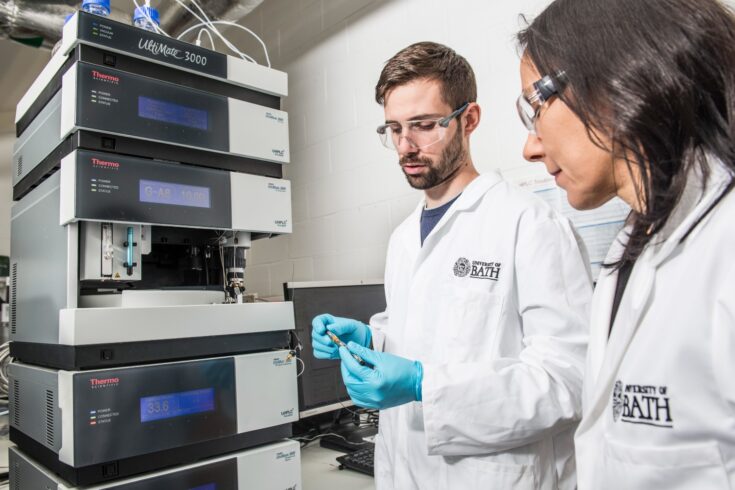In the first large scale and comprehensive wastewater-based epidemiology (WBE) study in the UK, researchers at Bangor University, University of Bath and the UK Heath Security Agency analysed wastewater from 10 cities.
The wastewater was analysed for both chemical and biological markers of health, including:
- pesticides
- pharmaceuticals
- disease-causing viruses
The work was supported by the Engineering and Physical Sciences Research Council (EPSRC) and the UK Health Security Agency.
Mass spectrometry techniques
The researchers collected samples from each location at hourly intervals over 24 hours on nine days in November 2021.
The samples for each day were pooled before being processed and analysed for trace chemical markers using mass spectrometry techniques.
The samples were also analysed to detect any genetic material from viruses (SARS-CoV-2, norovirus and adenovirus).
The total sampling catchment area equated to a population of around 7 million people.
Detecting trace chemicals
Using highly sensitive chemical analysis that could distinguish between very similar markers, the researchers were able to tell whether pharmaceuticals:
- had passed through the human body
- had been directly disposed into the wastewater system
They could also identify whether chemicals such as pesticides had been ingested through food or had washed into the wastewater system from agricultural land.
The team observed that differences in levels of chemical markers were mostly dependent on the size of population in the catchment area, however there were some outliers.
For example, in one city, there was a much higher concentration of ibuprofen found in the water, compared with other cities, suggesting direct disposal from industrial waste.
Identifying disease outbreaks
The researchers detected localised outbreaks of norovirus, COVID-19 and flu, but could also correlate them with spikes in usage of over-the-counter painkillers such as paracetamol.
The results indicate that analysing wastewater on a large scale in this way, dubbed WBE, could spot new outbreaks of diseases in communities early on, before large numbers were admitted into hospitals.
Early warning surveillance system
Professor Davey Jones, who led the team at Bangor University analysing the wastewater for viruses, said:
Norovirus and seasonal flu have always been a huge problem in hospitals each winter; now COVID-19 has added to this problem.
Our proof-of-concept study has shown the potential for wastewater-based epidemiology to provide an early warning surveillance system for these and other diseases, which would enable hospitals to prepare for outbreaks in the local area.
A very powerful tool
Professor Barbara Kasprzyk-Hordern, from the Water Innovation Research Centre and Institute for Sustainability at the University of Bath, led the chemistry work in the project.
She said:
Most people reach for the paracetamol when they first get sick and try to treat their illnesses at home.
So, looking for large spikes in paracetamol use could give an early indication that there may be an infectious disease outbreak in the community.
We can also detect markers of inflammation and so look for any possible links of poor health with exposure to harmful chemicals, such as pesticides from food or industrial sources of chemicals.
Our study has shown that only 10 daily samples from 10 wastewater treatment plants are needed to provide anonymous and unbiased information on the health of seven million people. This is much cheaper and faster than any clinical screening process.
This could, therefore, potentially be a very powerful tool for giving a holistic understanding of public health of different communities.
Cutting-edge technology
Dr Robert Felstead, Deputy Director for Cross Council Programmes at EPSRC said:
Whether it be rapid detection of disease outbreaks or identifying the illegal dumping of industrial chemicals, this cutting-edge engineering and digital technology has the potential to have a direct impact on improving public health.
Matthew Wade, from the UK Health Security Agency, said:
This has been a fantastic collaboration of chemists, biologists and government agencies, working with multiple water companies to collect important data on both chemical and biological markers from different parts of the UK.
We are delighted to be part of this project and look forward to developing the potential of this public health tool even further in the future.
The study is published in the Journal of Hazardous Materials.
Top image: Credit: Laurie Lapworth and University of Bath

